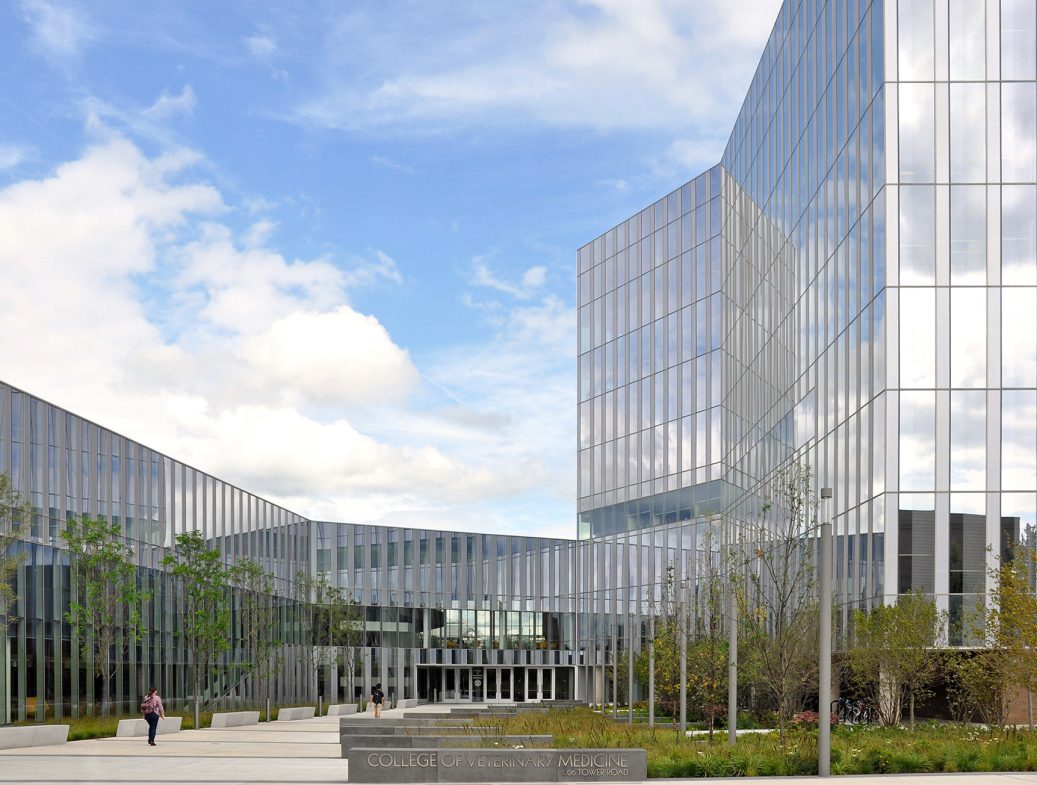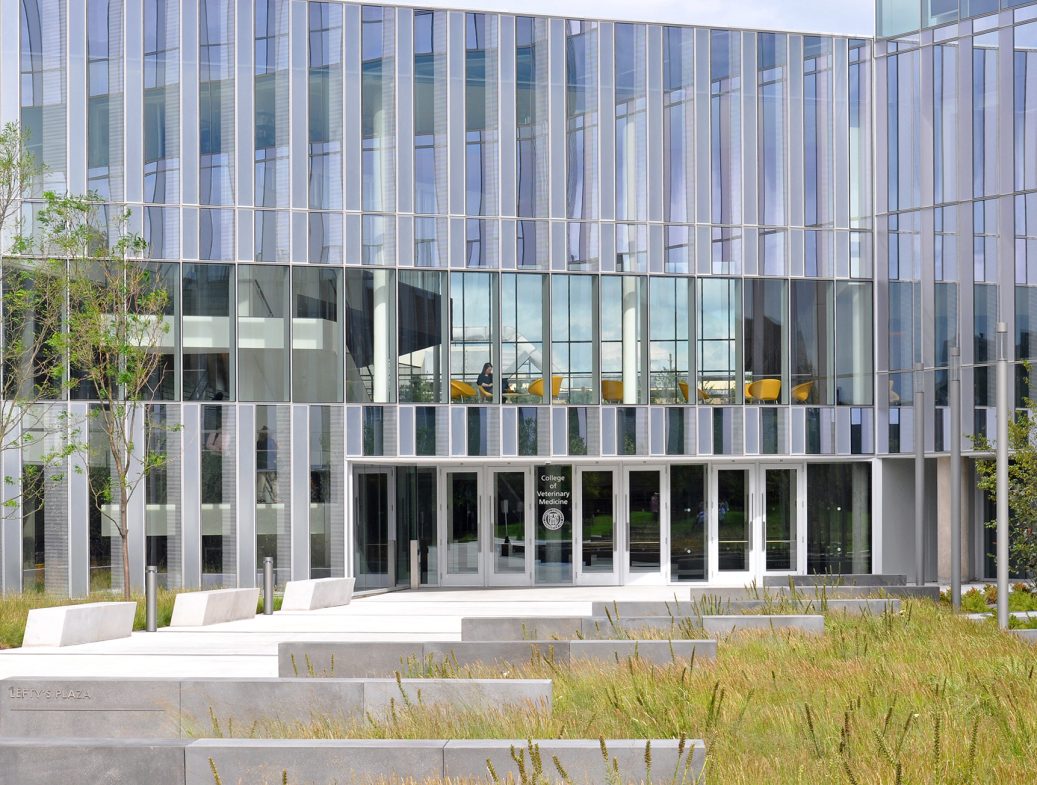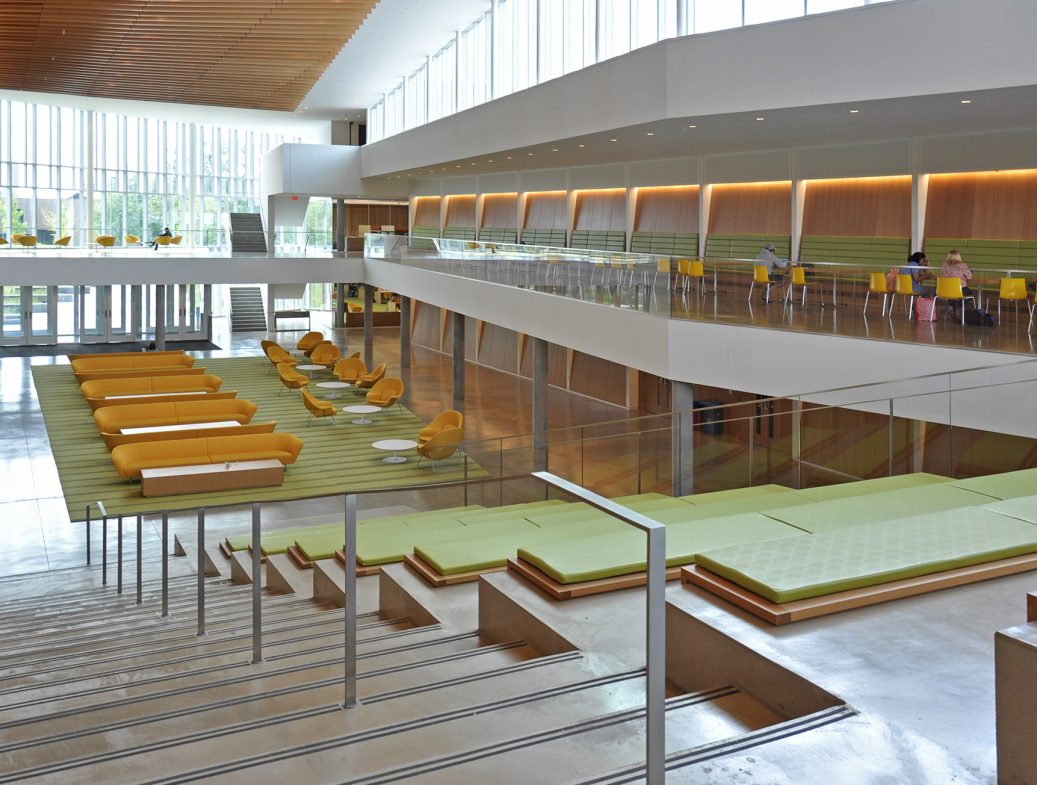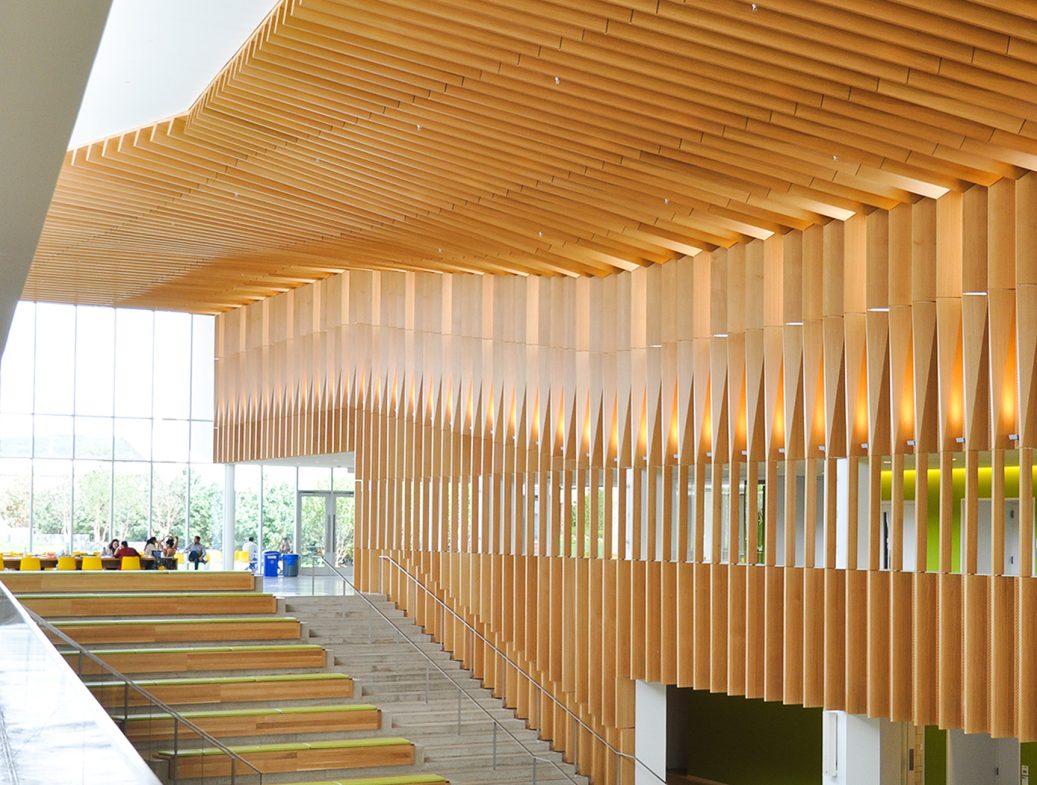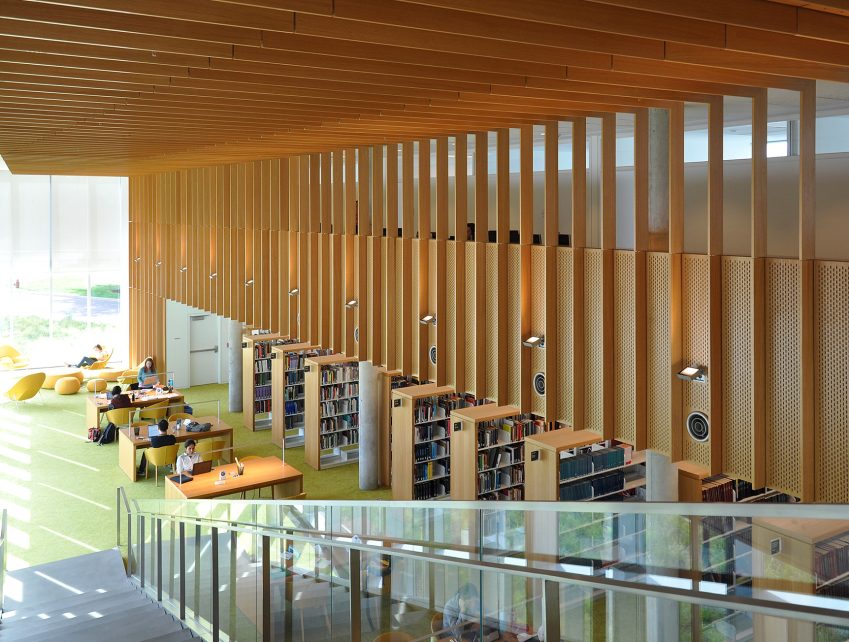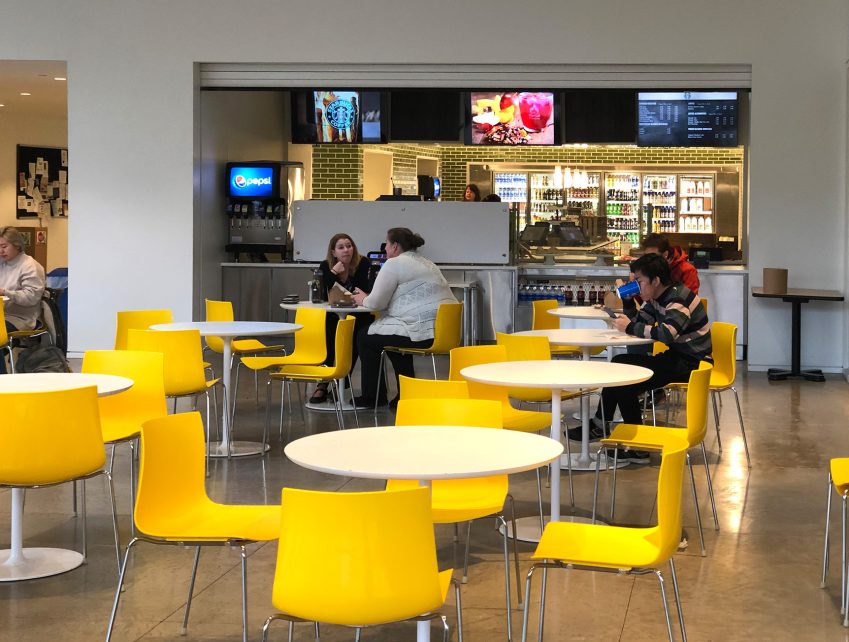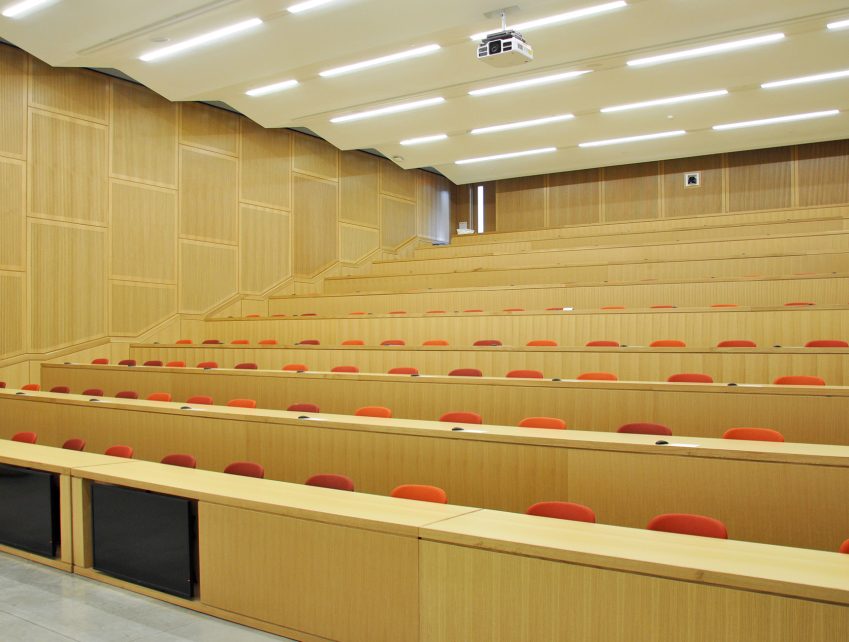Awards
- 2022 Design Award of Merit, AIA New York City
- 2019 Education Facility Design Award, AIA
- 2019 Honor Award, AIA Tri-State Excellence Design Awards
- 2019 American Architecture Award, The Chicago Athenaeum
- 2019 Popular Vote Winner: Higher Education & Research Facilities, Architizer A+ Awards
- 2019 Design Merit Award: Adaptive Reuse/Historic Preservation, AIA New York State
- 2019 Excellence Award: Education, SARA NY Design Awards
A phased renovation and expansion program that unifies the veterinary school campus.
Cornell University’s College of Veterinary Medicine is the nation’s top-ranked veterinary college, recognized internationally as a leader in veterinary education, research, diagnostics, and animal care. The renovation and expansion created a more unified campus and enabled the college to increase its pre-clinical class to 120 students. The project was implemented in two phases. Phase 1 included renovation and repurposing of the existing facilities to support the continuing education programs. Phase 2 included design and construction of two larger-capacity lecture halls and a unifying two-story gallery space that enhances interaction between students, faculty, and staff. The new spaces include demonstration areas and common space to support the planned growth. A new three-story addition houses the veterinary school library and administrative offices.
The gallery space employs a radiant floor heating and cooling system along with air systems providing ventilation and latent cooling. The displacement air system in the two large lecture halls supplies air to the floor to enhance comfort and ventilation in the rooms’ occupied zones. Heating and cooling systems utilize the campus steam and chilled water as the energy sources. The HVAC system design included a centralized building control system using digital technologies and interconnected with the existing campus system. Power systems were extended from the existing electric service and existing emergency generator. The project included a new centralized lighting control system, new telecommunications distribution and new security system.



